My COGS GIS Education
What About COGS
The Centre of Geographic Sciences (COGS) is one of the best colleges in Canada for learning GIS. As a COGS graduate myself I am writing this article to help future students make up their minds about going to COGS.
Over the years there have been many articles about COGS in the GoGeomatics Canada magazine. One of my favorites is the Myth of COGS. Another resource is a book called, ‘The Story of COGS,’ written by Bob Maher and his wife, Heather Stewart.
A brief history of COGS can be found in the ‘2015-2016 Graduate Profiles’ produced by Dave MacLean and the Advanced Geomatics Diploma students. This is a great resource for employers looking to hire talented COGS graduates.
The Learning at COGS
You can take many paths to a diploma in geographic sciences at COGS. The college has three program tracks, Geomatics, Surveying, and Information Technology (IT). The school population is split fairly evenly between the Survey/Geomatics Technicians, Geomatics diplomas, Advanced diplomas in geomatics studies, Marine Geomatics, and IT departments.
The one year Survey Technician program provides the tools and information needed to become a qualified survey technician. For students that want to enhance and broaden their skills in surveying, COGS offer’s Geomatics Engineering Technology. This 1-year course delves into the more theoretical concepts used in geomatics. Both courses are accredited with the Canadian Technology Accreditation Board (CTAB).
I am a recent graduate of the COGS GIS program and can offer insights into the course work and studies leading to a diploma in Geographic Information Systems (GIS).
I’m Coming from the Canadian Military
Coming into the GIS program I didn’t know anything about geomatics. I was in the Naval Reserves in the eighties and nineties, as a Naval Communicator. Through Veterans Affairs, I was able access a vocational training program. Since I was a technical person, I went searching for a 2-year program that would be technical challenging, require complex thinking and had good career opportunities. After researching different programs offered by Nova Scotia Community College (NSCC), I narrowed my choices to Civil Engineering Technology or Geographic Sciences.
Test Driving COGS
NSCC has a ‘test drive’ program, where a student can arrange to visit a campus and explore a program by sitting in on classes. For me, the drive to the COGS campus is 90 minutes each way, so I was hoping the program would be worthwhile to drive, ‘all that way’.
My test drive was unique. In April COGS students were doing final exams and final projects were due. This meant I was not able to sit in on any classes and experience the teaching first hand. One of the GIS instructors, Mark Hebert, gave me a tour and explained the program. Afterward, he left me with a second-year student who showed me some of the projects he was working on and some he had completed.
It was impressive, I pretty much decided to enroll in COGS from my test drive experience. COGS was an eye-opener, the technology was ‘new to me’, the passion of the instructors and students left its mark. Fate had a hand in the decision also, the civil engineering program had a one-year wait list, while COGS was available the Fall of 2014. In the end, it was the right set of circumstances and the right choice for me.
Living in Lawrencetown
If you decide to attend COGS, you must move to a little village ninety minutes outside of Halifax. This is the first culture shock. Lawrencetown has very little to offer in the way of amenities. It has one gas station, which sells a few groceries, a post office, and a legion branch. The local internet is 5 Megabits and the biggest event is the Annapolis Valley Exhibition.
Studying at COGS
Overall this isolation does help you as a student, with fewer distractions, there’s more time for geomatics work. On the first day of classes the previous year’s students tell the new students how to succeed and survive COGS. It is one of the most intense course loads that I have experienced. From the first week to week sixteen, it is almost non-stop.
The year is split into 2 terms and each term there are 6 courses with three or four hours of instruction, plus about four to six hours for homework and assignments for each course, every week. From the start of the first week to the end of week 16, things were non-stop. Most days started at 8:30 am and ended around 9 or 10 pm. COGS locks students out of the computer labs at 10 pm. A few of the instructors told stories of how, as students, they would hide to stay well past 10 pm. For us,If you had still not finished the work for the next day, you took it home and stayed up until it was finished.
A flow developed very quickly for me at COGS. Each week was a new challenge and a new assignment. Every student is required to lease a laptop for the two-year course I was in. It may sound expensive but it was worth every penny. The college loads over $15,000 in geomatics software onto our systems. Having the laptop meant we could finish assignments at home. It wasn’t always go, go, go. There were down times and time to have some fun.
Everyone Can use a little help at COGS
There were many nights in the lab I would be helping a classmate or a classmate would be helping me through a challenge. Not only does it build teamwork, but it also taught us to appreciate the information and knowledge other students have. When I was the second-year student in 2015 talking to the new students, I told them to start working together early and stay on campus as much as possible.
In my first year, the students that would run out the door after class, were the ones that had difficulties and ultimately dropped out. If you managed to pass the first term, more than likely the faculty were stuck with you for two years.
I believe the success of the students comes from hard work, and the knowledge and experience of the COGS faculty. While they try not to handhold students, they do offer help and guidance to a student who might be having trouble.
Each course I took was designed to start with the basic concepts and finish with a product that would meet or exceed industry standards. The first year is described as a foundation year. The basics of geographic sciences are taught using a wide spectrum of courses. The goal is to expose the student to the core skill sets we might need in the geomatics sector. This gives students a better appreciation of the different fields as well as insight to deciding on the career path they can take.
What do you think?
So that is a little about my COGS experience. I will be writing another article based on my experiences at COGS where I give some insight into the faculty and courses at COGS. Please let me know in the comments below what you think.



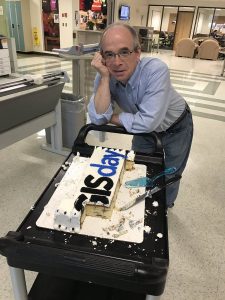

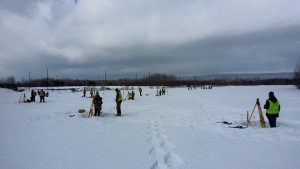

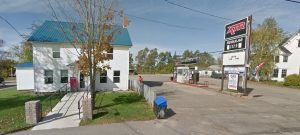
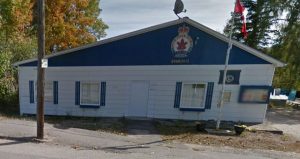
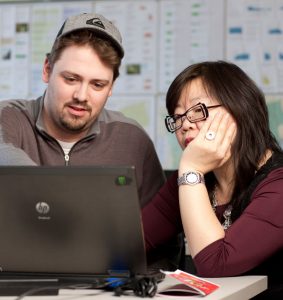



Just one update from the Valley. The Lunn’s Mill Beer company opened for business
In Lawrencetown last week. For more details, check my blog site:
ernestblairexperiment.wordpress.com
I would commend the Brickyard Red.
Bob
Thanks for all your help for our community mapping project and the churches stuff – which I am just going through again. We now have a church layer which needs to be populated. Thanks again. Anne
Thank you Richard for a student’s perspective of COGS. As a former instructor during the “boot-camp-fifty-week-program era” I read with interest that the intensity still holds. If I could challenge COGS it would be to seek even greater collaboration with community to unearth and nurture innovative local projects and stimulate alternative learning paths.